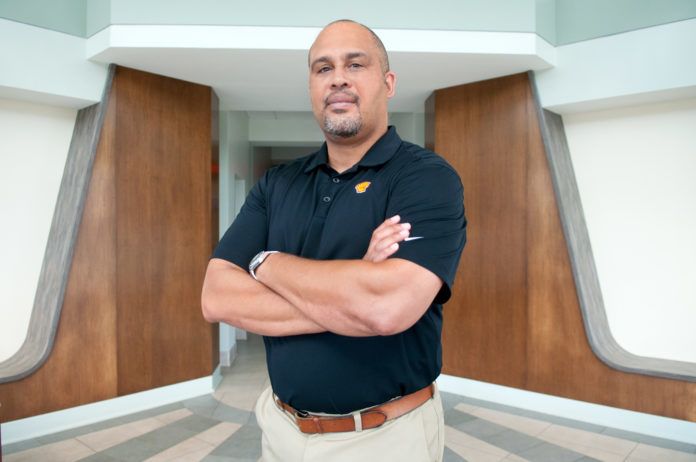
A Lake Charles native, Rhoman Hardy began his career in 1988 at Shell’s Taft plant, eventually becoming an electrical engineer there in 1991. Since then, Hardy has held positions of increasing responsibility—he worked in the company’s distribution and pipeline business overseeing regional technical activities, then later in Houston he supported the company’s global manufacturing business.
Position: Vice President for the U.S. Gulf Coast; General Manager
Company: Shell Geismar
What They Do: The Shell Geismar facility manufactures detergent alcohols, ethylene glycol, alpha olefins and a diversified line of ethylene-based industrial chemicals. The site comprises 800 acres, only 400 of which are currently developed.
In Hardy’s current role, he oversees plants in the Gulf Coast region, as well as a plant in Pennsylvania, while continuing to serve as general manager at Shell Geismar. He has a bachelor’s degree in electrical engineering from LSU, an executive MBA from Rice University in Houston and a certificate in executive leadership training from the Wharton School at the University of Pennsylvania.
He currently serves on the boards of the Louisiana Chemical Association, Shell Pension and Provident Fund Trust, Baton Rouge General Hospital and Louisiana Community and Technical College System.
THE CHALLENGE
In Houston, Hardy was appointed general manager of reliability, maintenance and turnarounds, where he worked globally for more than five years in support of Shell’s global manufacturing business.
His team’s task: Improve operational excellence. “Our charge was to address performance gaps and improve operations at facilities in North America, Europe and Asia from a reliability and cost competitiveness standpoint,” Hardy says.
That meant he had to figure out a way to connect with people in an international setting and help them recognize opportunities and implement changes. He discovered, however, that while they had common problems, the solutions were often very different.
“Coaching them through all that and creating some level of accountability was an interesting puzzle,” Hardy says. “These were people who didn’t see the need for external help. Also, the local customs were different, the culture was different. To be able to make changes to meet the end goal was a unique challenge.”
Along the way, there were cultural differences to overcome. In the U.S., saying “yes” and nodding signals acceptance, while in Singapore it’s usually a show of respect. Experience was a problem, too. Supervisors at overseas plants weren’t necessarily skilled in the areas they were leading. That impacted Hardy’s ability to have critical conversations about performance.
THE RESOLUTION
Hardy quickly realized that a common solution across all the plants would not succeed. Needing clarity, he began hopping flights to the plants to “spend time in their shoes.” It might mean a 22-hour flight, but by spending time “on the ground” and “watching their reality,” conversations became more productive.
He also conducted standing monthly calls with all of the principal players, but instead of grilling them about production issues, “I would say, ‘tell me how things are going’ and ‘how was last month?’ By taking time to listen, I had total buy-in when it came time to work on actual solutions.”
That created an atmosphere of mutual respect that gave Hardy a better understanding of their realities. Over time, the performance gap was reduced. “We had a fantastic improvement journey,” Hardy says.
“The job was about reliability and cost competitiveness … and by the time we were done, we had created enough additional production to be the equivalent of building a brand-new facility. That’s how much we were getting, collectively, out of our assets.”
THE TAKEAWAY
Hardy learned that there can be different paths to a common solution. To be effective, changes should take cultural and local realities into account. “It’s about finding and assessing the path that works in that location,” Hardy says, “then coaching and helping people get to where they need to go.”
He still uses that concept, although in a domestic setting, by customizing his leadership approach based upon regional differences. “Even Louisiana and Texas sites are different, just in the way people approach things and accept change,” he adds. “We embrace the local starting point and help them in that framework.
“I’ve learned to lead in a way that is best for the organization, instead of leading in a way in which I’m comfortable. By adjusting my leadership style, the desired outcome can be more readily achieved, no matter the location.”


